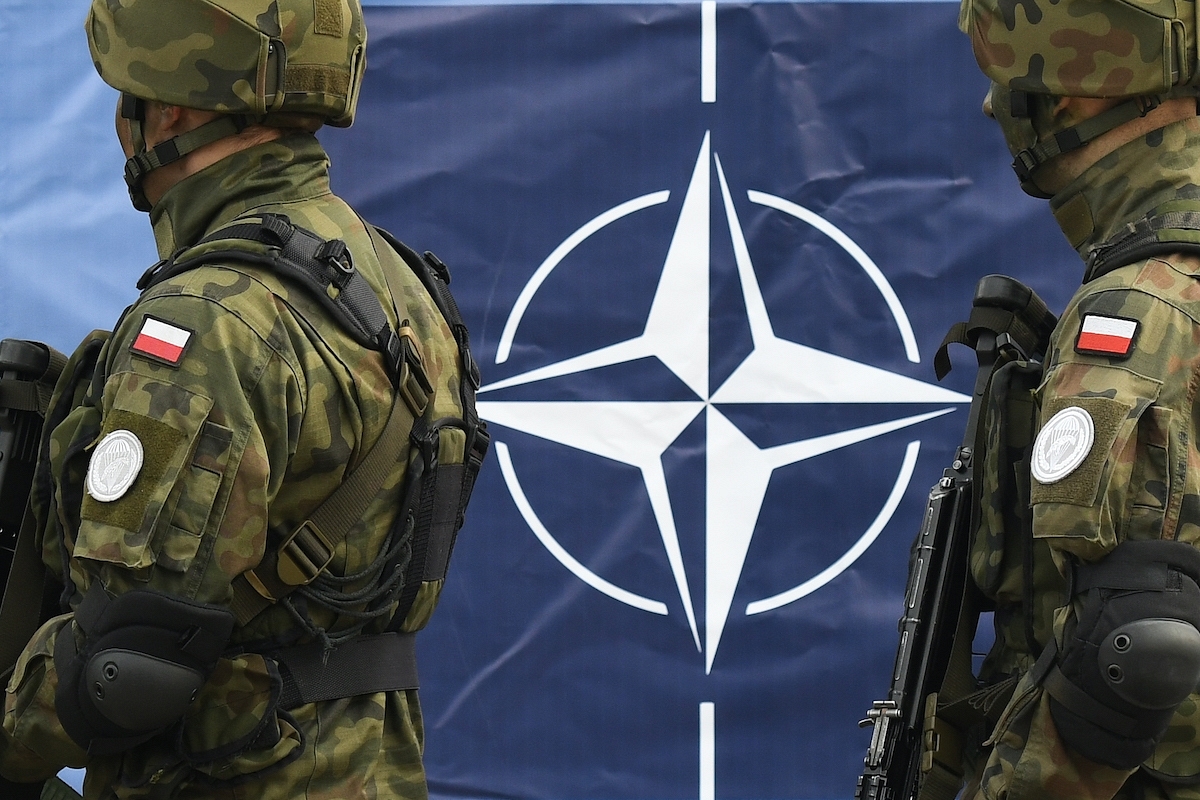World
Explained In Brief: Finland And Sweden Decide To Join NATO; Russia Threatens Retaliation
- Putin's move to push NATO back from Russia's borders appears to have brought the alliance closer instead.

NATO troops
On 12 May, Finland declared its intention of joining the North Atlantic Treaty Organisation (NATO).
In response, Russia has stated that they would take retaliatory steps which would include a "military-technical" response. Analysts believe that Moscow is threatening to deploy tactical nuclear weapons near the Russia-Finnish border.
Moscow could also deploy hypersonic missiles to the Kaliningrad enclave, across the Baltic Sea wedged between allies Poland and Lithuania. Analysts have also raised the possibility of cyberattacks on critical infrastructure.
Finland's leaders believe that NATO membership will strengthen the country's security and the alliance against Russian aggression.
For decades, the pejorative term 'Finlandisation' was used as a byword for neutrality. On the question of Finland joining NATO, even as recently as January this year, Finland's Prime Minister, Sanna Marin, had said that it is "very unlikely". Four months later, the hesitation has disappeared.
Russia's invasion of Ukraine has altered decades of path dependency. On 12 May, Sauli Niinisto, the President, and Prime Minister Marin declared that Finland "must apply" for membership of NATO as soon as possible.
Just days after Putin ordered the 24 February invasion of Ukraine, public opinion in Finland on the question of joining NATO shifted dramatically.
Support for NATO membership hovered around 20-30 per cent for years. It now stands at over 70 per cent.
Finland's coalition government is expected to approve that decision to join the alliance against Russia on 15 May. This will be followed by a formal request to NATO for membership, which is a mere formality.
Reports suggest that Finland's inclusion into NATO will be followed by Sweden's inclusion. This will further tilt the strategic balance towards NATO in Europe, irrespective of any gains Russia makes in Ukraine.
Sweden is moving towards NATO as well, but it is allowing Finland to lead the way. There are historical reasons behind this.
After Finland's Winter War with Soviet Union (1939-40), the Finns had to sign a treaty of friendship with Moscow. When NATO was formed in 1949, Sweden decided they would not join NATO because they feared it would lead to the unintended consequence of Finland being forced to join the Warsaw Pact. The presence of a Warsaw Pact nation at its border would have put Sweden at risk.
As a result of this, the Finns and the Swedes co-ordinate their defence policies closely. On 15 May, Swedish Prime Minister Magdalena Andersson's Social Democrats will make their decision.
The party, which has historically been committed to non-alignment, is expected to back NATO membership. This will be followed by Sweden embarking formally on the path of NATO membership by starting its NATO application process.
Ensuring a broad consensus across party lines will be important for Swedish Prime Minister Andersson. Since the end of the Napoleonic Era, which marked Sweden with unfortunate experiences, the Swedes have preferred limited involvement in European wars.
According to analysts, the time period between formally applying for NATO and becoming members of NATO, is the most vulnerable time period for Finland and Sweden.
Prime Minister of the United Kingdom, Boris Johnson, visited Finland and Sweden this week. He vowed that Britain will defend both these countries if they are attacked by Russia in this vulnerable time period, when NATO's Article Five guarantee of mutual defence would not have taken effect.
Why do nations join NATO?
NATO has grown from the original 12 allies in 1949 to 30 today. The last nation to join NATO was North Macedonia in 2020.
The primary pull factor of NATO is Article 5. Nations join NATO because Article 5 of the Washington treaty, NATO's founding document, sets out a mutual-defence promise: "The Parties agree that an armed attack against one or more of them in Europe or North America shall be considered an attack against them all".
This Article essentially guarantees that a member nation will have the US military at its aid. If the Russian invasion of Ukraine heightens Finland and Sweden's threat perception of Russia, as members, they will have the aid of US military (and other powerful militaries) to fight against Russia.
Putin's move to push NATO back from Russia's borders appears to have brought the alliance closer instead. His intention to expand Russia's sphere of influence and tilt the balance of power in Europe in Moscow's favour might have instead expanded NATO and Washington's sphere of influence and tilted the balance of power in the US' favour.
Support Swarajya's 50 Ground Reports Project & Sponsor A Story
Every general election Swarajya does a 50 ground reports project.
Aimed only at serious readers and those who appreciate the nuances of political undercurrents, the project provides a sense of India's electoral landscape. As you know, these reports are produced after considerable investment of travel, time and effort on the ground.
This time too we've kicked off the project in style and have covered over 30 constituencies already. If you're someone who appreciates such work and have enjoyed our coverage please consider sponsoring a ground report for just Rs 2999 to Rs 19,999 - it goes a long way in helping us produce more quality reportage.
You can also back this project by becoming a subscriber for as little as Rs 999 - so do click on this links and choose a plan that suits you and back us.
Click below to contribute.
Latest